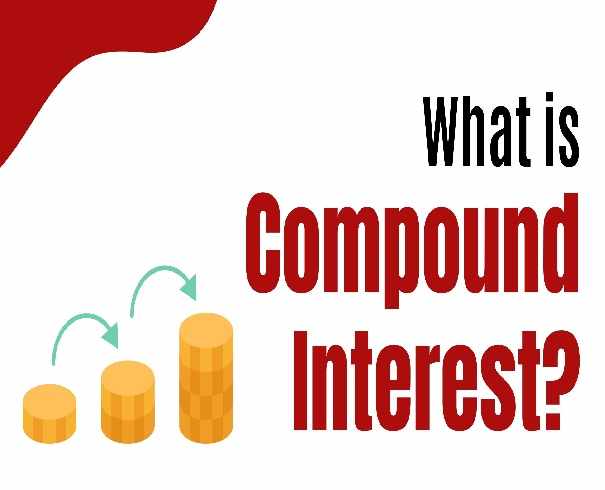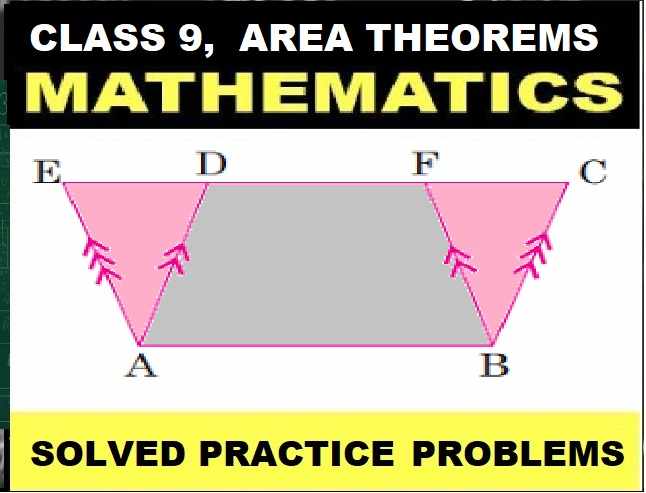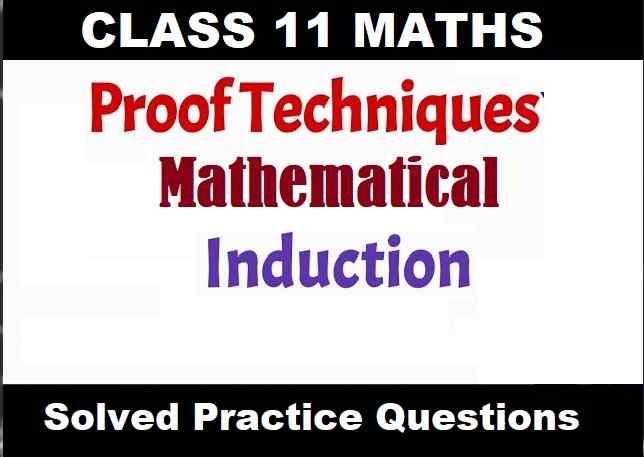ce Compound Interest Class 9 OP Malhotra Exe-2A ICSE Maths Solutions Ch-2. We Provide Step by Step Solutions / Answer of Questions on compound Interest without using formula for OP Malhotra Maths . Visit official Website CISCE for detail information about ICSE Board Class-9 Mathematics.

Compound Interest Class 9 OP Malhotra Exe-2A ICSE Maths Solutions Ch-2
| Board | ICSE |
| Publications | S Chand |
| Subject | Maths |
| Class | 9th |
| Chapter-2 | Compound Interest |
| Writer | OP Malhotra |
| Exe-2A | Solving Without Formula |
| Edition | 2025-2026 |
Exercise- 2A
Compound Interest Class 9 OP Malhotra ICSE Maths Solutions Ch-2
Find the compound interest in the following:
Que-1: Principal = ₹ 10000, Rate % p.a = 12 %, Number of years = 2.
Sol: Rate (R) = 12%
Period (T) = 2 years
Interest for the first year = PRT/100
= (10000×12×1)/100
= ₹ 1200
Amount after first year = P + S.I.
= ₹ 10000 + ₹ 1200 = ₹ 11200
Principal for the second year = ₹ 11200
Interest for the second year
= (11200×12×1)/100 = ₹ 1344
∴ Interest for 2 years = ₹ 1200 + ₹ 1344 = ₹ 2544
Hence compound interest = ₹ 2544
Que-2: Principal = ₹ 50000, Rate % p.a = 10 %, Number of years = 2.
Sol: Principal (P) = ₹ 5000
Rate (R) = 10% p.a.
Period (T) = 2 years
∴ Interest after first year = PRT/100
= (5000×10×1)/100 = ₹ 500
∴ Amount after first year = P + S.I. = ₹ 5000 + ₹ 500 = ₹ 5500
∴ Principal for the second year = ₹ 5500
Interest for the second year
= (5500×10×1)/100 = ₹ 550
∴ Interest for 2 years = ₹ 500 + ₹ 550 = ₹ 1050
Hence compound interest for 2 years = ₹ 1050.
Que-3: Principal = ₹ 2800, Rate % p.a = 10 %, Number of years = 1*(1/2).
Sol: Principal (P) = ₹ 2800
Rate (R) = 10% p.a.
Period (T) = 1*(1/2) years
Interest for the first year = PRT/100
= (2800×10×1)/100
= ₹ 280
∴ Amount after first year = P + S.I.
= ₹ 2800 + ₹ 280 = ₹ 3080
Principal for the second year = ₹ 3080
Interest for the next 6 months (1/2 years)
= ₹ (3080×10×1)/(100×2) = ₹ 154
Total interest for 1*(1/2) years = ₹ 280 + ₹ 154 = ₹ 434
Hence compound interest for 1*(1/2) years = ₹ 434
Que-4: Principal = ₹ 2000, Rate % p.a = 20 %, Number of years = 2.
Sol: Principal (P) = ₹ 2000
Rate (R) = 20%
Period (T) = 2 years
∴ Interest for the first year = PRT/100
= (2000×20×1)/100
= 400
Amount after one year = P + S.I.
= ₹ 2000 + ₹ 400 = ₹ 2400
or principal for the second year = ₹ 2400
Interest for the second year
= (2400×20×1)/100
= ₹ 480
∴ Total interest for 2 years = ₹ 400 + ₹ 480 = ₹ 880
or compound interest for 2 years = ₹ 880
Que-5: Principal = ₹ 20480, Rate % p.a = 6*(1/4) %, Number of years = 2 years 73 days.
Sol: Principal (P) = ₹ 20480
Rate (R) = 6*(1/4) % = 25/4 % p.a.
Period (T) = 2 years 73 days
Interest for the first year = PRT/100
= (20480×25×1)/(100×4)
= ₹ 1280
Amount after one year = P + S.I.
= ₹ 20480 + ₹ 1280 = ₹ 21760
or principal for the second year = ₹ 21760
Interest for the second year
= ₹ (21760×25×1)/(4×100) = ₹ 1360
∴ Amount after 2 years = ₹ 21760 + ₹ 1360 = ₹ 23120
Principal for the next 1/5 year
= ₹ 23120
Interest for 1/5 year = ₹ (23120×25×1)/(100×4×5)
∴ Total interest for 2*(1/5) years
= ₹ 1280 + ₹ 1360 + ₹ 289 = ₹ 2929
Que-6: Find the amount and compound interest on a sum of ₹ 15625 at 4% per annum for 3 years compounded annually.
Sol: Principal (P) = ₹ 15625
Rate (R) = 4% p.a.
Period (T) = 3 years
Interest for the first year = PRT/100
= ₹ (15625×4×1)/100 = ₹ 625
∴ Amount after one year P + S.I. = ₹ 15625 + ₹ 625 = ₹ 16250
Or principal for the second year = ₹ 16250
Interest for the second year
= ₹ (16250×4×1)/100 = ₹ 650
Amount after second year = ₹ 16250 + 650 = ₹ 16900
or principal for the third year = ₹ 16900
Interest for the third year = (16900×4×1)/100
= ₹ 676
Amount after third year = ₹ 16900 + ₹ 676 = ₹ 17576
and compound interest = A – P = ₹ 17576 – ₹ 15625 = ₹ 1951.
Que-7: To renovate his shop, Anurag obtained a loan of T8000 from a bank. If the rate of interest at 5% per annum is compounded annually, calculate the compound interest that Anurag will have to pay after 3 years.
Sol: Amount of loan (Principal) (P) = ₹ 8000
Rate of interest (R) = 5% p.a.
Period (T) = 3 years
∴ Interest for the first year = PRT/100
= ₹ (8000×5×1)/100 = ₹ 400
Amount after one year = P + S.I.
= ₹ 8000 + ₹ 400 = ₹ 8400
or principal for the second year = Rs. 8400
Interest for the second year
= (8400×5×1)/100
= ₹ 420
Amount after two years = ₹ 8400 + ₹ 420 = ₹ 8820
or principal for the third year = ₹ 8820
Interest for the third year = ₹ (8820×5×1)/100
= ₹ 441
∴ Amount after 3 years = ₹ 8820 + ₹ 441 = ₹ 9261
∴ C.I. = A – P = 9261 – 8000 = ₹ 1261
Que-8: Maria invests ₹ 93750 at 9.6% per annum for 3 years and the interest is compounded annually. Calculate.
(i) the amount standing to her credit at the end of the second year.
(ii) the interest for the 3rd year.
Sol: Maria’s investment (P) = ₹ 93750
Rate of interest (R) = 9.6%
Period (T) = 3 years
Interest for the first year = PRT/100
= ₹ (93750×9.6×1)/100
= ₹ (93750×96×1)/(100×10)
Hen 9000
Amount after one year = P + S.I.
= ₹ 93750 + 9000 = ₹ 102750
or principal for the second year = ₹ 102750
= (102750×9.6×1)/100
= ₹ (102750×96×1)/(100×10)
Therefore ₹ 9864
(i) ∴ Amount after 2 years = ₹ 102750 + ₹ 9864 = ₹ 112614
or Principal for the third year = ₹ 112614
∴ Interest for the third year = (112614×9.6×1)/100
= (112614×96×1)/(100×10) = ₹ 10810.94
(ii) Amount after third year = ₹ 112614 + 1081094 = ₹ 123424.94
Que-9: A sum of ₹ 9,600 is invested for 3 years at 10% p.a. compound interest.
(i) What is the sum due at the end of the first year ?
(ii) What is the sum due at the end of the second year ?
(iii) Find the compound interest earned in the first 2 years.
(iv) Find the compound interest at the end of 3 years.
Sol: Principal (P) = 9600
Rate of interest (R) = 10% p.a.
Period (T) = 3 years
Interest for the first year = PRT/100
= (9600×10×1)/100 = ₹ 960
(i) ∴ Amount after the first year = P + S.I. = ₹ 9600+ ₹ 960 = ₹ 10560
(ii) Principal for the second year = ₹ 10560
Interest for the second year = (10560×10×1)/100
= ₹ 1056
Amount after the second year = ₹ 10560 + ₹ 1056 = ₹ 11616
(iii) Compound interest for two years = ₹ 960 + ₹ 1056 = ₹ 2016
Principal for the third year = ₹ 11616
Interest for the third year = (11616×10×1)/100
= ₹ 1161.60
(iv) Compound interest after the end of third year = ₹ 2016 + ₹ 1161.60 = ₹ 3177.60
Que-10: Shanker takes a loan of ₹ 10,000 at a compound interest rate of 10% per annum (p.a.)
(i) Find the compound interest after one year.
(ii) Find the compound interest for 2 years.
(iii) Find the sum of money required to clear the debt at the end of 2 years.
(iv) Find the difference between the compound interest and the simple interest at the same rate for 2 years.
Sol: Amount of loan taken by Shanker (P)
= ₹ 10000
Rate of interest (R) = 10% p.a.
Period (T) = 2 years
(i) Interest for the first year = PRT/100
(10000×10×1)/100 = ₹ 1000
Amount after one year = P + S.I.
= ₹ 10000 + ₹ 1000 = ₹ 11000
Principal for the second year = ₹ 11000
Interest for the second year
(11000×10×1)/100 = ₹ 1100
(ii) ∴ C.I. for 2 years = ₹ 1000 + ₹ 1100 = ₹ 2100
(iii) Amount after 2 years = ₹ 11000 + ₹ 1100 = ₹ 12100
(iv) Simple interest for 2 years
₹(10000×10×2)/100 = ₹ 2000
Now difference between C.I. and S.I. for 2 years
= ₹ 2100 – ₹ 2000 = ₹ 100
Que-11: Find compound interest on ₹ 5000 at 12% p.a. for 1 year, compounded half yearly.
Sol: Principal (P) = ₹ 5000
Rate (R) = 12% p.a. or 6% half yearly
Period (T) = 1 year or 2 half years
Interest for the first half year = PRT/100
= (5000×6×1)/100 = ₹ 300
Amount after one half year = P + S.I.
= ₹ 5000 + ₹ 300 = ₹ 5300
Principal for the second half year = ₹ 5300
Interest for the second half year
= (5300×6×1)/100 = ₹ 318
∴ Amount after 2 half years = ₹ 5300 + ₹ 318 = ₹ 5618
and C.I. for 2 half years = Rs. A – P = ₹ 5618 – ₹ 5000 = ₹ 618
Que-12: Find the amount and the compound interest on ₹ 16000 for 1*(1/2) years at 10% p.a. the interest being compounded half-yearly.
Sol: Principal (P) = ₹ 16000
Rate (R) = 10% or 5% half yearly
Period (T) = 1 12 years or 3 half years
Interest for the first half year = PRT/100
= (16000×5×1)/100 = ₹ 800
Amount after first half year = P + S.I. = ₹ 16000 + ₹ 800 = ₹ 16800
or Principal for the second half year = ₹ 16800
Interest for the second half year
= (16800×5×1)/100 = ₹ 840
Amount after 2 half years = ₹ 16800 + ₹ 840 = ₹ 17640
or Principal for the third half year = ₹ 17640
Interest for the third half year
= (17640×5×1)/100 = ₹ 882
Amount after third half year = ₹ 17640 + ₹ 882 = ₹ 18522
∴ C.I. for 3 half years = A – P = ₹ 18522 – 16000 = ₹ 2522
Que-13: Calculate the amount due and the compound interest on ₹ 40000 for 2 years when the rate of interest successive years is 7% and 8% respectively.
Sol: Principal (P) = ₹ 40000
Period (T) = 2 years
Rate of interest for the first year (R1) = 7%
and for the second year (R2) = 8%
∴ Interest for the first year = PRT/100
= ₹ (40000×7×1)/100 = ₹ 2800
Amount after first year = P + S.I.
= ₹ 40000 + ₹ 2800 = ₹ 42800
Principal for the second year = ₹ 42800
Interest for the second year = (42800×8×1)/100
= ₹ 3424
∴ Amount after 2 years = ₹ 42800 + ₹ 3424 = ₹ 46224
and compound interest for 2 years = A – P
= ₹ 46224 – 40000
= ₹ 6224
Que-14: If the simple interest on a sum of money for 2 years at 5% per annum is ₹ 50, what will be the compound interest on the same sum at the same rate for the same time.
Sol: S. Interest for 2 years
Period (T) = 2 years
Rate (R) = 5% p.a.
We know that S.I. and C.I. is same for the first year
∴ S. Interest for the first year = ₹ 50/2 = ₹ 25
and S.I. for the second year = ₹ 25
∴ Principal (P) = (S.I. ×100)/(R×T)
= (50×100)/(5×2) = ₹ 500
Now amount after first year = P + S.I.
= ₹ 500 + ₹ 25 = ₹ 525
Principal for the second year = ₹ 525
∴ Interest for the second year
= (525×5×1)/100
= 2625/100 = ₹ 26.25
C.I. for 2 years = ₹ 25 + ₹ 26.25 = ₹ 51.25
Que-15: A man invests ₹ 46,875 at 4% per annum compound interest for 3 years. Calculate :
(i) the interest for the 1st year;
(ii) the amount standing to his credit at the end of the 2nd year;
(iii) the interest for the 3rd year.
Sol: Investment (P) = ₹ 46875
Rate (R) = 4% p.a.
Period (T) = 3 years
(i) ∴ Interest for the first year = PRT/100
= ₹ (46875×4×1)/100
= ₹ 1875
(ii) Amount after one year = P + S.I.
= ₹ 46875 + ₹ 1875 = ₹ 48750
or Principal for the second year = ₹ 48750
Interest for the second year = (48750×4×1)/100
= ₹ 1950
∴ Amount after second year = ₹ 48750 + ₹ 1950 = ₹ 50700
(iii) or Principal for the third year = ₹ 50700
Interest for the third year = (50700×4×1)/100
= ₹ 2028
— : End of Compound Interest Class 9 OP Malhotra Exe-2A ICSE Maths step by step Solutions Ch-2 :–
Return to :– OP Malhotra S Chand Solutions for ICSE Class-9 Maths
Thanks
Please Share with Your Friends


